Chimney Liners
What Are Chimney Liners?
Chimney liners form a heat-resistant sleeve inside the flue. Because they seal gaps and channel smoke, they guard masonry against flames, acids, and moisture. Most building codes now require a liner, therefore every homeowner should know which style fits both fuel and budget.
Why Chimney Liners Matter
Without a liner, hot gases contact bare brick. Consequently, mortar weakens, tiles crack, and dangerous carbon monoxide can leak indoors. In addition, creosote gathers faster on rough walls, so chimney-fire odds rise. A sound liner, however, keeps heat inside the flue, boosts draft, and directs exhaust safely outside.
Main Types of Chimney Liners
1. Clay Tile Liners
Clay tile makes up the bulk of liners in older homes. These pieces cost less and resist normal wood-burning temperatures. However, they can crack during sudden chimney fires and are difficult to repair because each tile must be removed from the stack.
2. Stainless Steel Liners
Stainless steel chimney liners suit modern gas, oil, or wood appliances. The metal will not rust, and flexible sections snake through crooked flues, which speeds installation. Although the material costs more than clay, its long life and wide fuel range often offset the higher price.
3. Cast-in-Place Liners
Cast-in-place systems use a pumped insulation mix that hardens into a smooth tube. As a result, they strengthen weak chimneys and improve draft. Yet the process demands skill and, therefore, usually carries the highest upfront cost.
Choosing the Right Chimney Liner
First, note your fuel: wood needs thick walls; high-efficiency gas needs airtight stainless. Second, inspect the current flue for size and damage. Older, unlined stacks may require a flexible liner that slips through tight bends. Finally, check local code because some towns insist on stainless steel for oil or gas furnaces.
Quick Comparison at a Glance
- Clay tile: Low cost, long life, harder repairs
- Stainless steel: Broad fuel use, easy fit, higher price
- Cast-in-place: Adds strength, best draft, premium cost
Installation and Maintenance Tips
Because liner failures can cause fires, hire a certified chimney sweep for any install. The crew will size the tube, add top insulation, and secure a new cap. Afterward, schedule a sweep each year. Regular cleaning removes creosote, checks joints, and catches small cracks before they spread. Therefore, your investment stays safe for decades.
Key Takeaways
- Safety boost: Chimney liners stop heat and gases from eroding brick.
- Fuel match: Choose clay for standard wood fires, stainless for multiple fuels, or cast for weak stacks.
- Code compliant: Modern rules demand a liner in nearly every chimney.
- Pro install: Certified sweeps size, fit, and test the system.
- Annual care: Clean and inspect yearly to keep draft strong and hazards low.
Recent Stainless Steel Liner Install
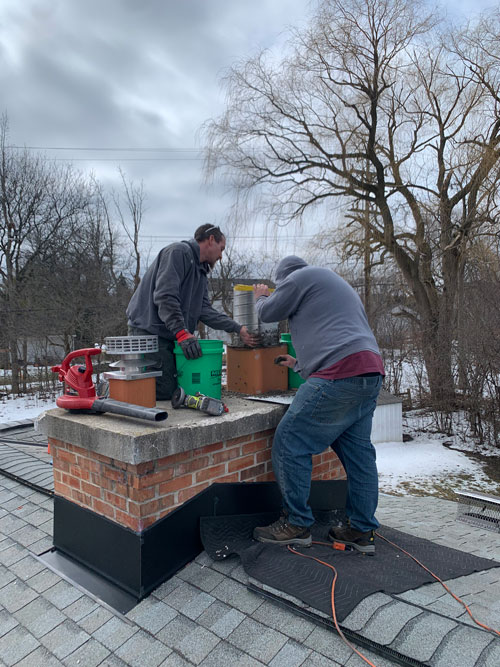
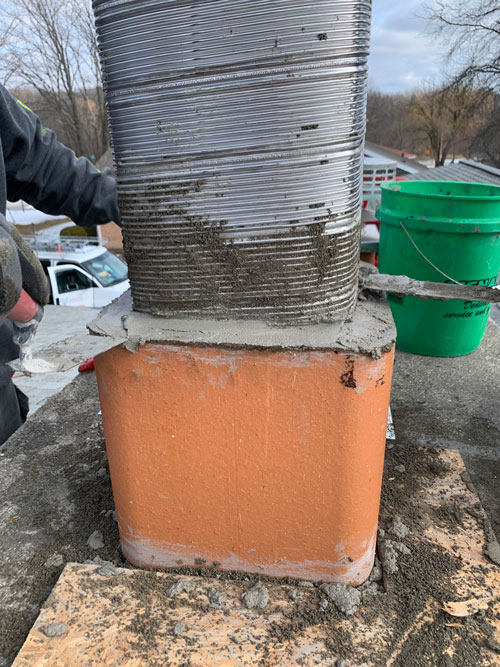
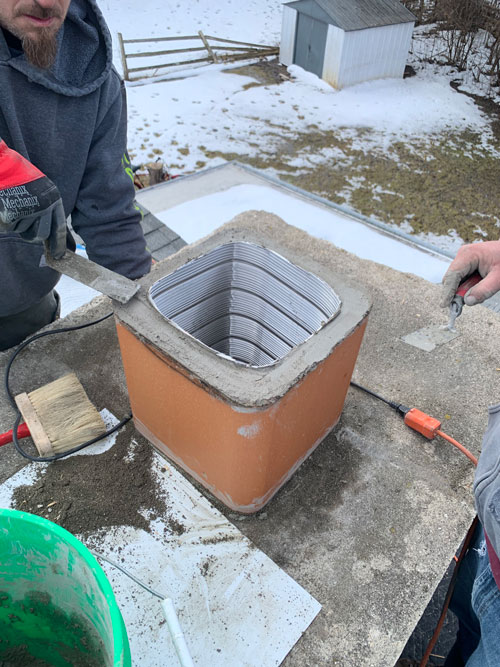
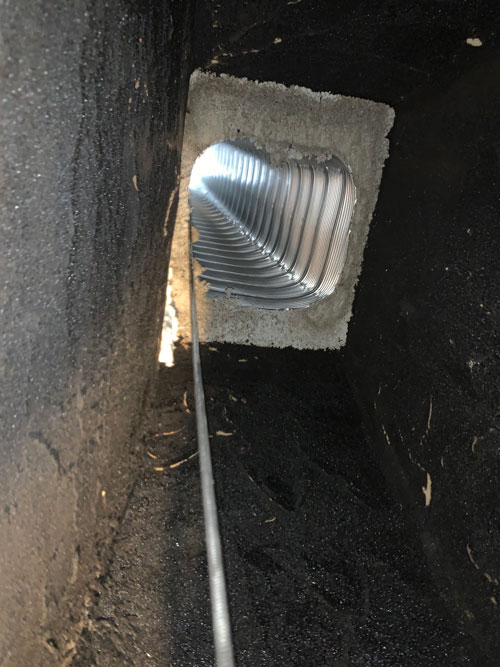
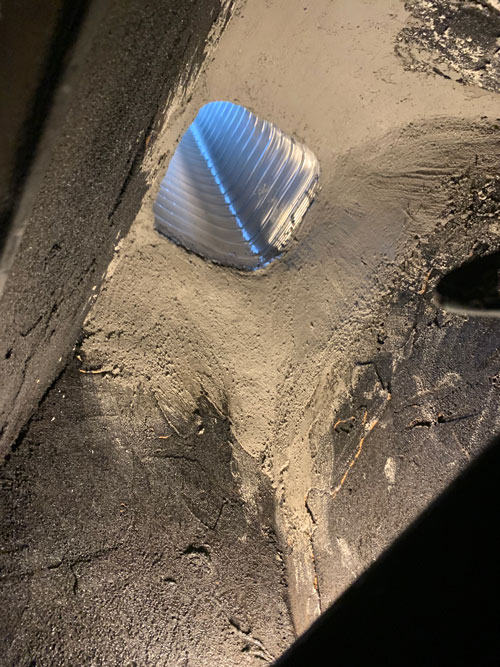
Why Chimney Liners Matter
Chimney liners are the hidden shield inside every safe fireplace. Because they form a heat-resistant sleeve, they stop flames, acids, and moisture from eroding brick. Without that barrier, mortar can crumble, carbon monoxide may seep indoors, and chimney fires become far more likely. Therefore, modern codes require a liner in nearly every flue.
Main Chimney Liner Types
Clay-Tile Liners
Clay tiles appear in many older homes. They cost less and last decades when maintained. However, tiles can crack during a sudden chimney fire, and repairing one section often means dismantling the stack.
Stainless-Steel Liners
Stainless-steel chimney liners fit gas, oil, or wood appliances. Flexible sections snake through tight bends, so installation is quick. Although the material costs more than clay, it resists rust and suits multiple fuels, which can offset the higher price over time.
Cast-in-Place Liners
Cast-in-place systems pump a light concrete mix around an inflated form. Once hardened, the liner creates a smooth, seamless flue that strengthens weak masonry. The method, however, demands expert skill and carries the highest upfront cost.
Choosing the Right Liner
First, match the liner to your fuel. Wood fires need thick walls; high-efficiency gas units need airtight stainless. Second, inspect flue size and condition. Tight bends may require a flexible stainless pipe, while fragile bricks may benefit from cast-in-place reinforcement. Finally, review local building codes, because some towns insist on stainless for oil or gas furnaces.
Quick Pros and Cons
- Clay tile: Low price, proven longevity, harder repairs
- Stainless steel: Broad fuel use, easy fit, higher material cost
- Cast in place: Adds strength, boosts draft, premium expense
Professional Installation Is Essential
Although do-it-yourself kits exist, liner failure can release toxins or ignite creosote. Certified sweeps measure the flue, size the pipe, insulate gaps, and lock a new cap in place. Consequently, you enjoy safer fires and better draft.
Maintenance for Long Life
Schedule a chimney sweep each year. During the visit, the technician will brush creosote, test joints, and spot small cracks before they spread. Thanks to this simple routine, even a budget-friendly clay liner can serve reliably for decades.
Key Takeaways
- Safety: Chimney liners block heat and gases from attacking brick.
- Efficiency: A smooth liner improves draft and heats rooms faster.
- Fuel match: Clay suits standard wood, stainless fits many fuels, cast strengthens old stacks.
- Expert fit: Professional installation ensures code compliance and long-term performance.
- Annual care: Yearly cleaning keeps hazards low and savings high.
Honest, Affordable & Experienced
The Clear Choice for your home improvement needs.
What Fox River Clients Are Saying

